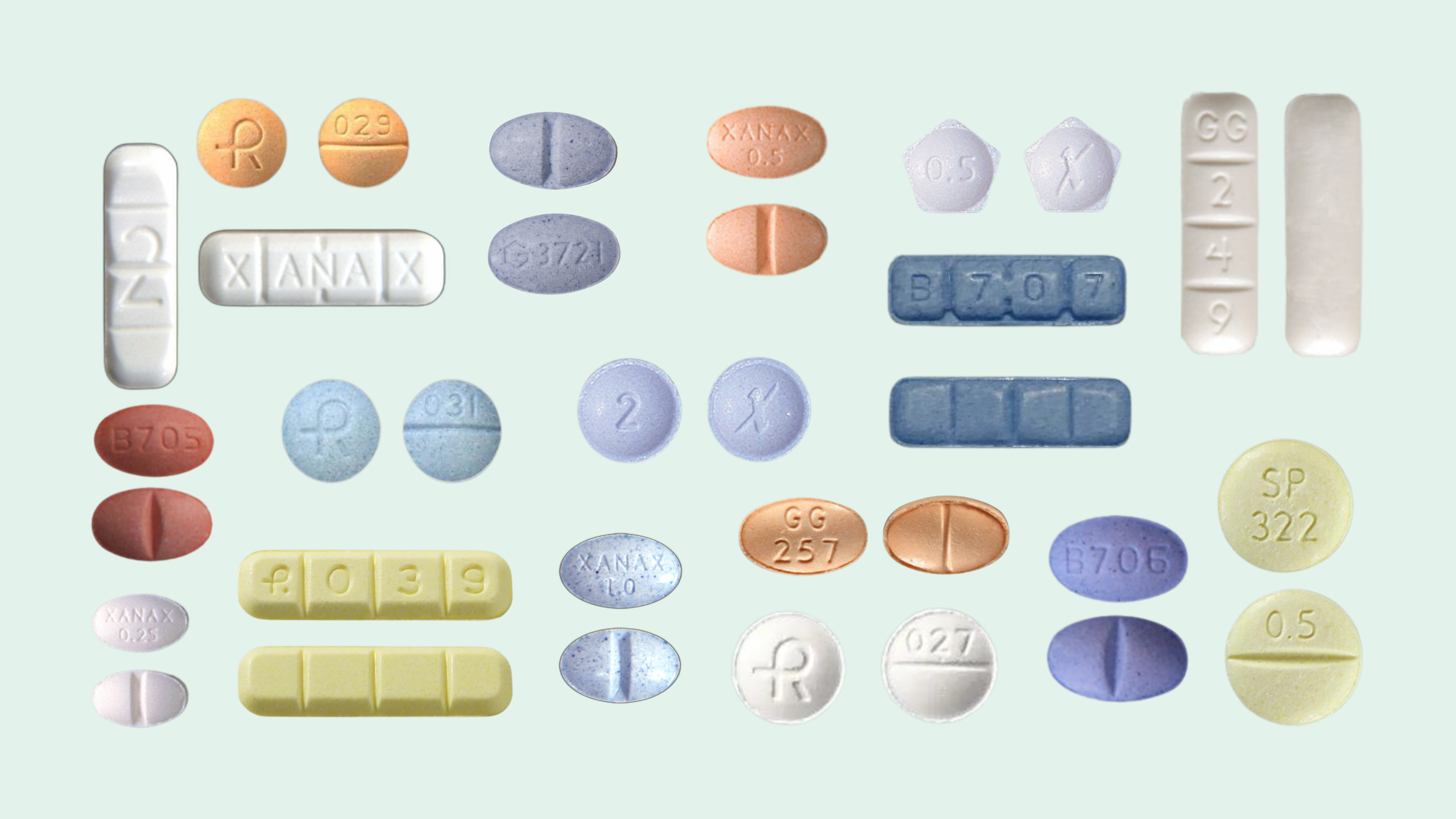Xanax Withdrawal and Side Effects
Xanax withdrawal can cause an array of physical and psychological problems. The intensity of your symptoms depends on your dosage, or how much Xanax you’ve been taking and for how long. Common acute symptoms include:
- Anxiety
- Insomnia
- Headaches
- Sweating
- Nausea and vomiting
- Diarrhea
- Mental fog or cloudy thinking
- Difficulty concentrating
- Nervousness
- Irritability
- Loss of appetite
- Weight loss
- Muscle cramps and twitching
- Blurred vision
Xanax is a high-potency drug, which makes its withdrawal symptoms more intense than symptoms of withdrawal from other types of benzodiazepines such as Valium (diazepam).
Quitting Xanax “cold turkey” can increase your risk of extreme and dangerous withdrawal symptoms, including delirium and seizures. It is highly advised to detox under the care of medical professionals who will help you slowly taper off the drug and minimize any discomfort.
Xanax Withdrawal Timeline
Alprazolam withdrawal looks different for everyone, but symptoms usually start 8 to 12 hours after the last dose. The medication is known for its rebound effects which means that there is a reoccurrence of a symptom after a person stops taking the medication that was treating it.
- Early withdrawal symptoms: These symptoms typically occur within the first two days after your last dose. They include headaches, insomnia, anxiety, restlessness, and/or panic attacks.
- Acute withdrawal symptoms: Symptoms tend to peak between the third day and the fifth or sixth day after your last dose. Additional symptoms may include: hallucinations, aggression, confusion, high blood pressure, muscle aches, nausea, tremors, and more.
- Late withdrawal: After about a week of Xanax withdrawal, the physical symptoms may become less intense; however, other symptoms may occur after this period which includes Xanax cravings, anxiety or depression, insomnia, and/or suicidal ideation. These psychological symptoms can sometimes persist for weeks or months after quitting.
Xanax Detox Treatment
Opting for medical detox in a rehab facility offers the safest path to overcoming your Xanax addiction. This supervised environment minimizes withdrawal risks while providing the necessary support. Additionally, it allows for a smooth transition into a comprehensive Xanax addiction treatment program within the same setting, maximizing your chances of long-term recovery.
Medications used in MAT for Xanax withdrawal may include other benzodiazepines with a longer half-life (how long it takes for the body to eliminate half the medication), allowing for a slower taper and reducing the severity of withdrawal peaks.
There are also some natural remedies that can help you cope with uncomfortable withdrawal symptoms including exercise, herbal sleep aids, meditation, massage, and acupuncture. However, it is important to consult with your doctor before trying any of this as something like light physical activity may cause too much strain on your body.
What Happens Next?
Detoxification is a crucial first step in your recovery from Xanax addiction. Getting through the challenges of withdrawal is a major accomplishment and you should be proud of yourself.
One of the most important steps is to engage in ongoing therapy and counseling. People usually choose an inpatient facility which can remove you from any triggers and help you focus on sobriety. While there are others who prefer to be closer to home and have a flexible schedule participating in outpatient treatment.
This next stage of addiction treatment involves individual therapy sessions with a licensed therapist or participation in group therapy sessions where individuals can share their experiences and receive support from others facing similar challenges. Therapy can help individuals address underlying issues contributing to their addiction, develop healthy coping mechanisms, and learn relapse prevention strategies.
Lastly, nourish your body with a balanced diet, regular exercise, and adequate sleep. These aspects of self-care will promote overall well-being and provide a strong foundation for managing stress and anxiety.

